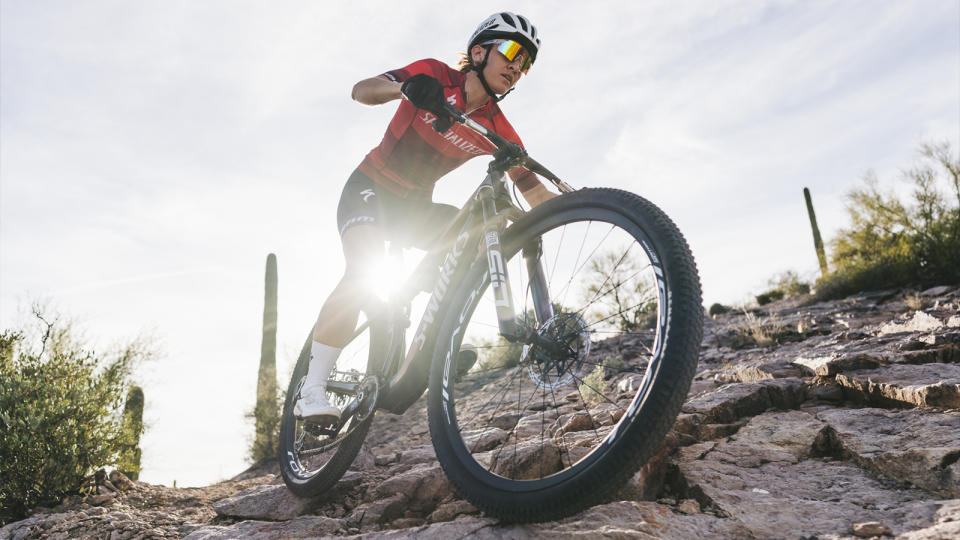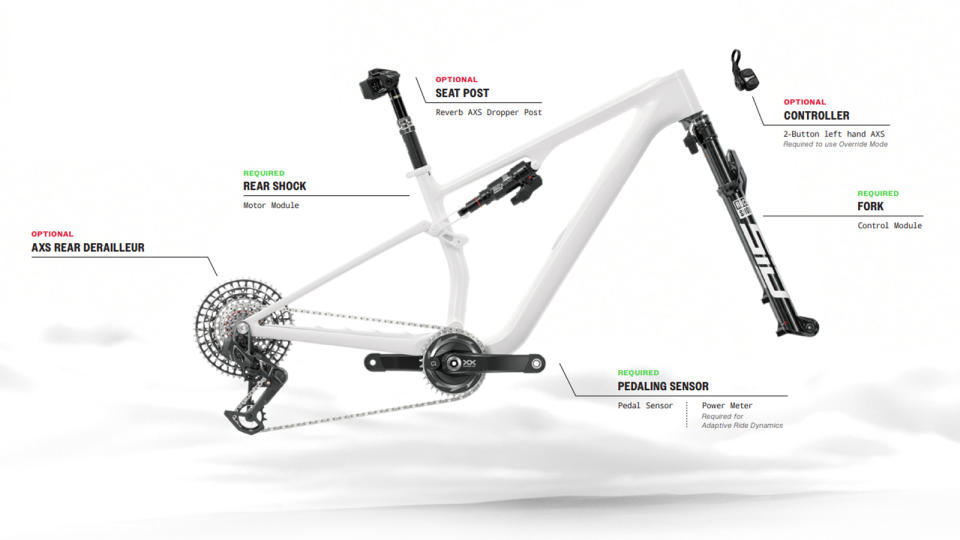Are algorithms going to revolutionize MTB suspension? RockShox releases new Flight Attendant with Adaptive Ride Dynamics

RockShox has announced the latest version of its electronic suspension platform called Flight Attendant, the updated Flight Attendant system has a new Adaptive Ride Dynamics feature which collects more data points and uses new algorithms to give personalized active suspension control.
We all know MTB suspension fork and shock settings make a huge difference to a bike's performance, maximizing grip and boosting efficiency, but how often do you fine-tune your settings? Once a year? Once a race? Even the most finicky suspension fettlers probably only twiddle their dials no more than every month or two. However, during the UCI Mountain Bike World Cup at Lenzerheide last year, SRAM claims Nino Schurter's suspension made 1,325 automatic suspension changes in just under 90 minutes of racing.
While the original Fight Attendant was aimed at trail and enduro riders, the latest version is squarely aimed at cross-country racing and claims to be 1.8 percent faster, that doesn't sound like a whole lot but according to SRAM's testing, it can equate to a 96-second advantage over a 90-minute XC World Cup race.
The newest Flight Attendant system still revolves around three suspension positions: Open, Pedal, and Lock. With the Flight Attendant set in Auto mode, the system will choose the optimal setting to suit the terrain and rider needs, controlling the fork and shock independently from each other. However, RockShox's Flight Attendant now takes in even more data points and uses new algorithms to ensure optimum suspension state every moment on the trail.

Adaptive Ride Dynamics
Flight Attendant now features 'Adaptive Ride Dynamics' which uses algorithms to learn how you ride and continuously personalize your suspension. By connecting to a power meter through SRAM's wireless AXS wireless network, Adaptive Ride Dynamics uses the power data to calculate your personalized 'Effort Zones'. These measurements are broken down into four zones that will influence your suspension state when out on the trail.
Sprint Zone – Adaptive Ride Dynamics encourages the system towards Lock position to offer the best pedaling efficiency.
High Effort Zone - The system will trend towards a more efficient suspension state, matching an all-out effort on flat terrain or a steep climb.
Medium Effort Zone - Flight Attendant looks for a balance of comfort and efficiency, aiming for a reactive feel during sustainable efforts.
Low Effort Zone - Soft pedaling or descending the suspension is opened up for maximum comfort and compliance.
What's most impressive though is SRAM claims that Flight Attendant can make suspension-position decisions every five milliseconds, so it's making these adjustments constantly as you ride.
Although the Adaptive Ride Dynamics can auto-detect your zones using data from past rides, you can also manually edit your Effort Zones. The app also adjusts mode settings, view Effort Zones for Adaptive Ride Dynamics, check battery charge status, and update the firmware as needed.
The potential on paper could be revolutionary, but how does it perform on the trail? Check out Guy Kesteven's review of SRAM's new Flight Attendant to find out.

New RockShox SID Ultimate and SID SL Ultimate fork and SIDLux Ultimate shock
The launch of the new Flight Attendant brings with it more than updated algorithms – there is a new 3-position Charger Race Day 2 damper which comes fitted inside a SID Ultimate and SID SL Ultimate.
The SID SL Ultimate comes in 100mm or 110mm travel and is quoted to weigh 1,480g. For XC riders looking for more travel, SID Ultimate has 120mm and its 35mm chassis weighs in at a claimed 1,624g. Unlike the trail forks, the Flight Attendant SID forks don't have any low-speed compression adjustment although bottomless tokens can be fitted.
At the rear, there's a SIDLux Ultimate shock equipped with an RL3 Flight Attendant and available with either a SoloAir or DebonAir air spring.
Flight Attendant SID bike compatibility
To take advantage of the Adaptive Ride Dynamics feature on Flight Attendant you will need a Flight Attendant fork, rear shock, and a SRAM/Quarq AXS power meter. SRAM says that using an AXS Rear Derailleur and 2-button AXS controller will enable additional functionality, although SRAM doesn't specify what these features are in the press release. The system also doesn't connect to the RockShox Reverb AXS dropper post, SRAM says if you do not currently run a RockShox Reverb AXS dropper post, you will need to purchase a left-hand remote if you’d like to utilize Override Mode.
Although Flight Attendant is compatible with certain electric mountain bikes, SRAM specifically states that Adaptive Ride Dynamics does not work with e-MTBs or Eagle PowerTrain equipped bikes at this time.

Suppose you fancy upgrading to Flight Attendant and already own a 2024 SID or SID SL (D1) fork. In that case, the good news is your existing fork can be upgraded with the new Flight Attendant Control Module and Flight Attendant Charger Race Day 2 damper (fork-specific). The bad news is that the SIDLuxe shocks can't be retrofitted with Flight Attendant.
If you are upgrading remember that there are additional clearance considerations and not all frames will be compatible.
RockShox Flight Attendant: Weight, pricing and availability
Buying into the latest Flight Attendant system will be a major upgrade financially though, meaning it's likely only going to be for the most dedicated racer or those with seriously deep pockets.
The RockShox SID SL Ultimate Flight Attendant will cost $1,349, €1,499, £1,339, while the SID Ultimate Flight Attendant is retail at $1,449, €1,599, £1,429. There is currently no pricing for the 3-position Charger Race Day 2 damper upgrade as yet. The SID Luxe shock will cost $849, €949, £849 – and if you don't currently have a power meter, you will need to upgrade to an XO, XX, or XX SL crankset fitted with an AXS power meter which starts at €480 / €480 / £430.
For the full product details, availability, and technical specifications, check out SRAM.com.

